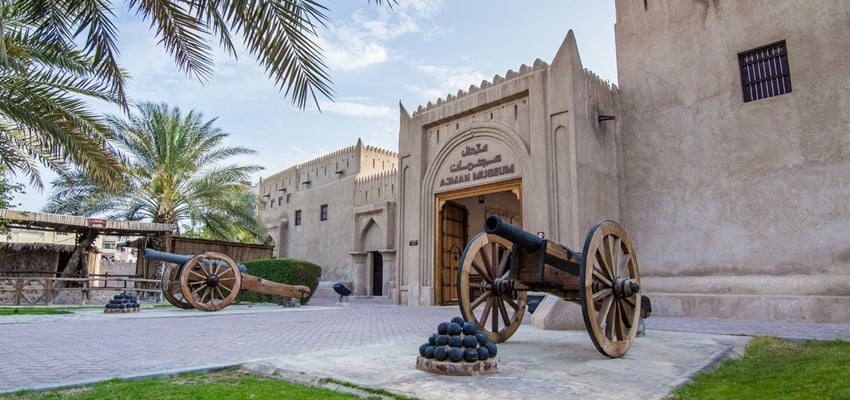

The fortress was built from coral stone and gypsum and was preserved by H.H. Sheikh Rashid Bin Humaid (d.1838). The museum is home to ancient manuscripts, old ingenious irrigation systems and wooden dhows.
The Ajman museum is home to all sorts of relics ancient articles that provide a glimpse into how life was in the emirate earlier. These include clay jars and jewellery as well as pearling and fishing tools. Life-like dioramas, one after the other, take you back in time as you witness traditional Bedouin marketplaces, weddings, fishing and agriculture. Displays in the museum are annotated in both Arabic and English and are arranged chronologically.
It was in 1816 that Sheikh Al Nuaimi and his small band of followers defeated the Al Bu Shamis tribe in conflict to capture the coastal settlement of Ajman. They also captured the Ajman Fort soon after and established the Nuaimi rule, who continue to be the ruling UAE family in the Emirate.
The 18th-century fort was once a mainstay for the Ajman ruling family. It also acted as the first line of defence against any potential invaders and attackers. The structure of the building consists of a palace, two wind towers (barjeels) and two watchtowers. These have been maintained, even though the structure itself has undergone renovation over the years. You can also see the mighty gate and two cannons at the entrance to the museum.
From 1970 to 1978, the fort was also used as a police station. The museum still contains relics of this period as well.
It was in 1981 that Ajman Fort finally became a museum. So as you can see, Ajman Museum history is as fascinating as the artifacts it holds.
![]()